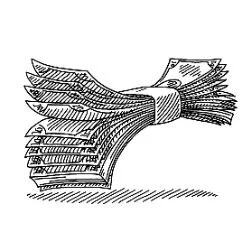10 Quick Tips for Leading Team Conversations in Stressful Situations
/Crisis situations can bring out the best — and the worst — in leaders, teams, employees, partners. We’re only human, and stressful situations cause humans to react emotionally, which tends to show up as anger, fear, aggression, anxiety, quick and poor decisions, and interpersonal conflict.
Let’s face it: If you have more than two people in a room tasked to accomplish something, you have the possibility of conflict — different ideas, personalities, “conflict hooks” all bouncing against each other. As common as it is in normal circumstances, conflict multiplies exponentially in unforeseen situations and crises.
Read More




















When we join a company, partnership or team, our expectation is that everyone involved will exhibit professional behavior toward us and each other. Instead, it’s highly possible that we may become one of the more than 60 million adults in the United States who are affected in some way by bullying behavior at work.
What kind of behaviors are we talking about? Our definition is any interpersonal behavior that causes emotional distress in others sufficient enough to impede their productivity or disrupt organizational functioning. It isn’t just a personality conflict — it’s a chronic pattern of disrespectful behavior.